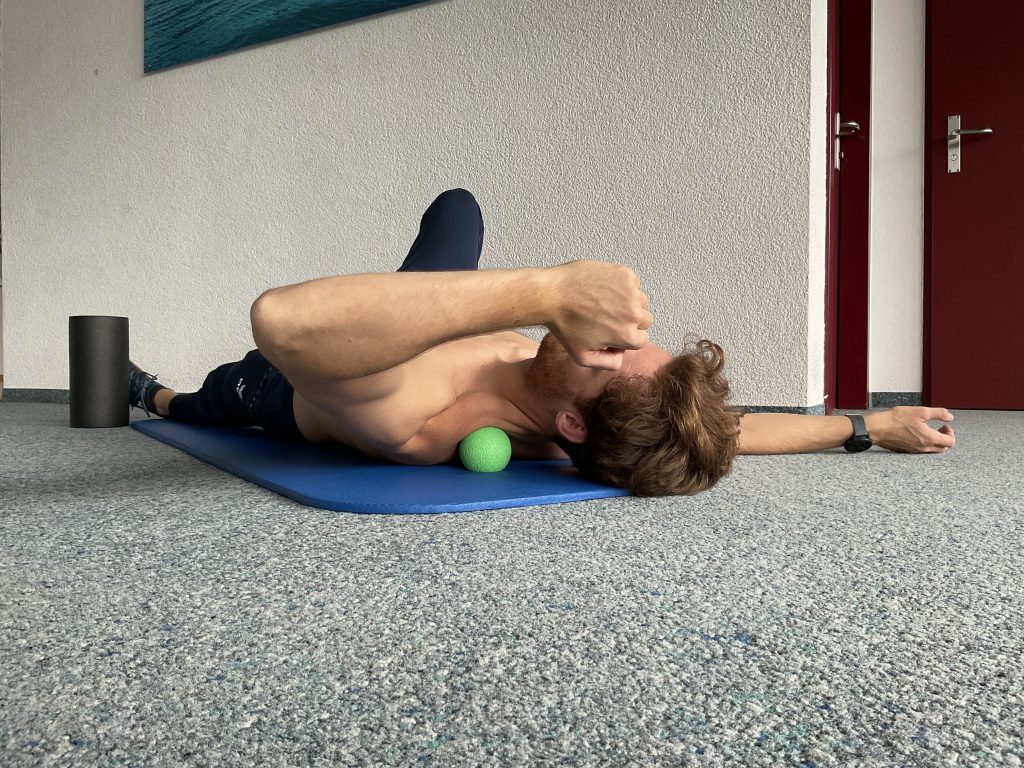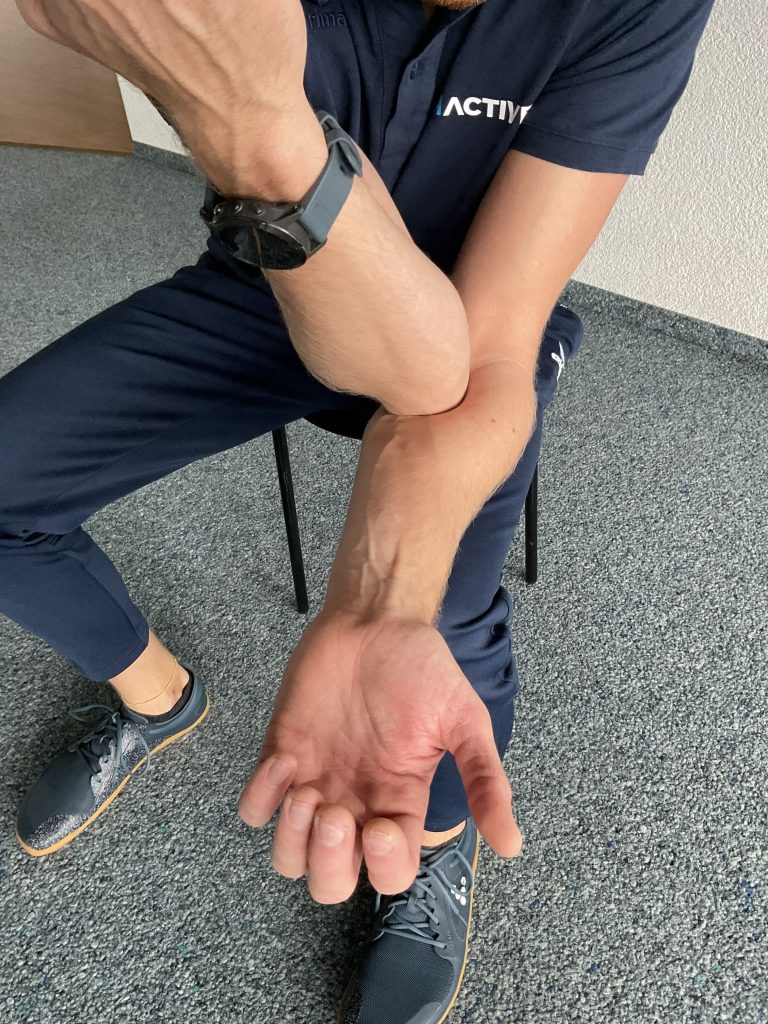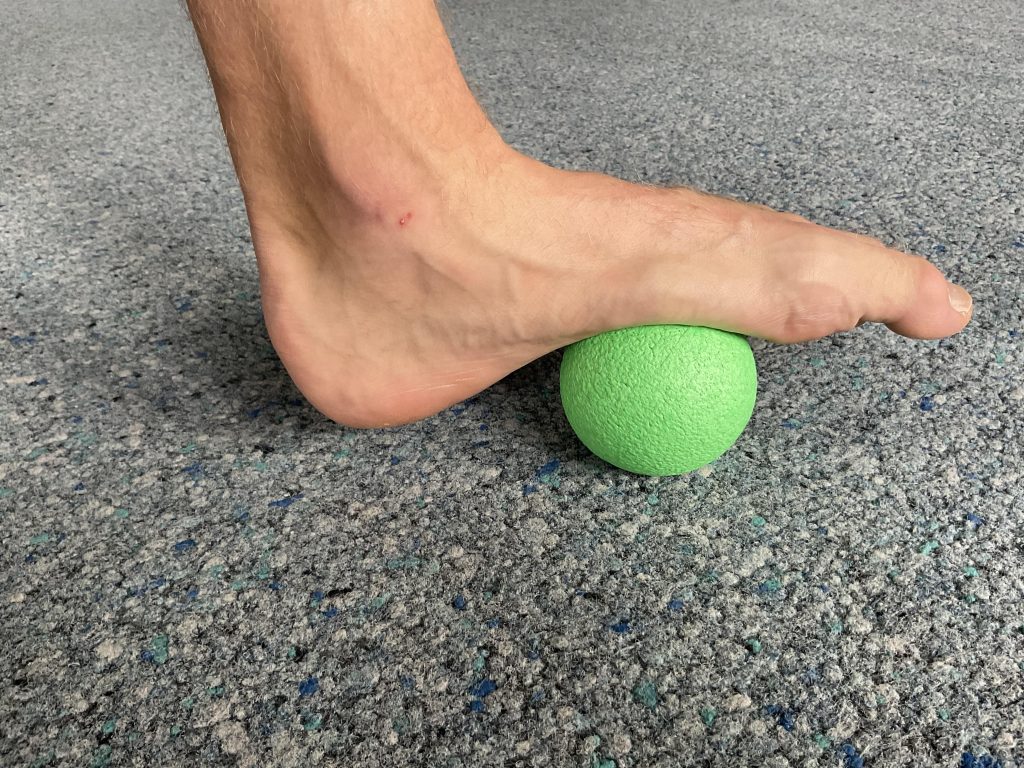Self-massage for rock climbers can be used as a general prevention strategy to keep your muscles relaxed and enhance blood circulation. However, self-massage can never compensate for a rest day, proper nutrition, and proper training planning.
In this article, I’ll explain the benefits of self-massage and how, where on the body, and when to apply it.
1. Why Should You do Self Massage as a Rock Climber?
When we look closer at self-massage, this is what actually happens: you put repeated pressure onto soft tissue, be it muscle, connective tissue, and/or tendon, or onto all at the same time, which triggers free nerve endings and opens up blood vessels. As a result, you might experience the following:
- Pain reduction
- Increased blood flow
- Tension reduction
- Increased mobility
- Better coordination
If you’re wondering how “a bit of pressure” on your muscles can have this wide variety of effects, let me explain.
What follows is a very simplified, specific part of pain education. When it comes to pain reduction from self-massage something like the following happens. Pain arises in the brain as a response to a danger signal sent by a muscle, a tendon, or a part of your connective tissue. This danger signal can present itself to the brain by way of the accumulation of waste products at a certain location due to reduced blood flow, hypertension, or movement problems.
When you massage a muscle and put pressure on it, your brain “feels” this which creates competition for the original pain sensation. As the origin of the new sensation is different it gets preference over your pain signal.
And what happens then? You feel less pain.
Still, there are 2 other possible mechanisms that can lead to a reduction in pain after self-massage.
One, because you’ve increased the blood circulation which in turn reduces tension, and cleans out waste products, and two because you’re finally moving the muscle.
For increased mobility and better coordination, it’s no different. You feed the brain with information about the issue you’re massaging. This information can then be used by your brain to improve your coordination and to better manage the division of tension in your muscles which can increase mobility.
So the bottom line is, yes you’re massaging your muscles but you’re doing something to your brain.
And one more thing before we move on. Did you notice how often I used the words ‘might’, ‘can’, and ‘may’? That is because most of it hasn’t been scientifically proven. Definitely when it comes to the improvements in coordination and increase in mobility. Still, this doesn’t mean you can’t experience any of these benefits. I do so myself on a regular basis, and so do my patients.
2. Where to do Self Massage for Climbers?
For rock climbers, the main areas to do self-massage are the muscles of the body which are stressed most during rock climbing. Among these are the following:
- Back muscles
- Shoulder muscles
- Trapezius Muscle

- Chest muscles
- Lower arm muscles

- Muscles and connective tissue of the feet

For optimal results, it’s best to massage muscles or parts of muscles that feel hard and/or tender when you touch them with your hands and fingers or when you pass over them with your massage tool. If you just go by your inner feeling, you might perceive something as tense where it’s not and vice versa.
3. How to do Self Massage
There is no predefined way of doing self-massage. From my perspective though, you have 2 options:
- Put a timer and massage each body part for a similar time
- Keep massaging until your tender spots are gone
The first technique is faster and can be useful when you don’t have any active complaints. The second technique on the other hand takes more time and hurts more. Because to eliminate tenders spots you need to massage deeply with a smaller tool so you can generate more pressure.
3.1 Self-Massaging Posture
You can do self-massage:
- Sitting
- Lying
- Standing (against a wall)
It depends on two factors which posture is best:
- The muscle you massage
- The amount of pressure you want to put on your muscles
I recommend you try different positions and see what works best for you.
4. What Can You Use to do Self Massage?
You can use several tools to do self-massage. Here’s a list of which some you’ll definitely possess:
- Foam roll: good for larger muscles and muscle groups like the chest, back, and legs
- Tennis ball/lacrosse ball/foam ball: good for smaller muscles and to increase pressure on tense muscles and trigger points wherever they are in the body
- Massage stick: good for anywhere you can reach comfortably given you have to hold the stick with both your hands
- Elbow: using your elbow can be a great tool to penetrate deep into tissues. This can be painful so thread carefully and since you’re the patient and therapist at the same time make sure you’re relaxed while massaging yourself.
- Your thumb: about as point as the elbow but softer and with more sensation. And because the thumb is at the end of your hand you can press on a larger part of the body than with your elbow
- The base of your thumb: is a bit less pointy than your thumb or elbow but therefore also less painful.
- Metal self-massage “springs”: specially made for finger massage, I love them and think they’re great for increasing blood flow and reducing tenderness of the finger joints.
It depends on the area you’re massaging and on your personal preference, which tool is best to use. If you find it hard to relax while you use your own hands or elbow to massage (which requires tension) it’s better to use a tool. This way you can focus on your breathing and relaxation to let the foam roll or ball sink into your tissues.
4. When Should You Do Self Massage?
Self-massage can be done at any moment, also before you go climbing. Because, contrary to static stretching, self-massage before engaging in sports doesn’t reduce your sports performance.
If you want to warm up and loosen your body then I think it’s a good idea to do it before climbing. Yet, if you do self-massage to treat tension/pain it’s better to do it in the afternoon or evening. In the morning you’ll be stiffer and more sensitive which might influence the efficacy of your self-massage.
